Kayak is a popular watersport. Paddlers want to explore new waterbodies with distinct types of kayaks. Among them, whitewater kayaks are used for fast-moving rivers. The question is can you use a whitewater kayak on a lake?
These kayaks are designed to turn quickly to cope with the current and course of the rivers. In general, lakes are calm and slow-moving water bodies. It doesn’t have high currents or fast and rapid courses like rivers.
Whitewater kayaks have a specific design to perform and float in turbulent rivers. You can use it on a lake, but it will be more laborious than a recreational kayak.
This writing will guide you about whitewater kayaking on a lake and present a complete overview of whitewater kayaking on a lake. Laet’s get started.
Table of Contents
Can You Use a Whitewater Kayak on a Lake?
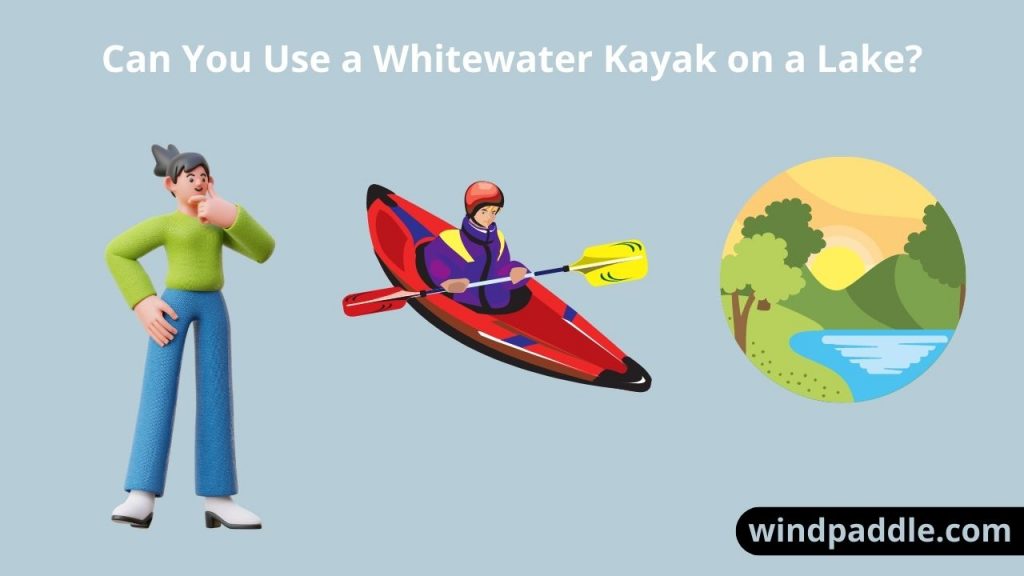
Yes, you can use whitewater on a lake. We don’t recommend this because of several problems. The most important thing is that whitewater kayaking is not suitable for the lake. It is designed for fast-moving water bodies and turbulent rivers.
Using a white water kayak on a lake will be hard to manage the straight line. The kayak will move slowly. You have to struggle more to paddle and move forward with a whitewater kayak on a lake.
Furthermore, it will make you tired earlier. For this reason, you can not paddle at the same speed when paddling with friends and family who have recreational kayaks.
We recommend understanding the types of kayaks and the suitable place to paddle them. When you have the most suitable kayak for the lake, you will get less struggle and enjoy more.
What Is a Whitewater Kayak?
You already know that whitewater kayaks are suitable for extreme currents and turbulent rivers. So, what is a whitewater kayak?
A whitewater kayak comes with a shorter design than a typical kayak. This exceptional and small design enables them to move and float efficiently in turbulent rivers with high currents and waves. People use whitewater kayaks for rivers and oceans.
There are two distinct varieties of whitewater kayaks. If you want to create a wide footprint on the water, a planing hull will be the best choice for you. This flat hull will give you more stability and enable you to handle the wave confidently.
On the contrary, you can also use a displacement hull. This type of hull is not available with new kayaks. It is less stable than a planing hull.
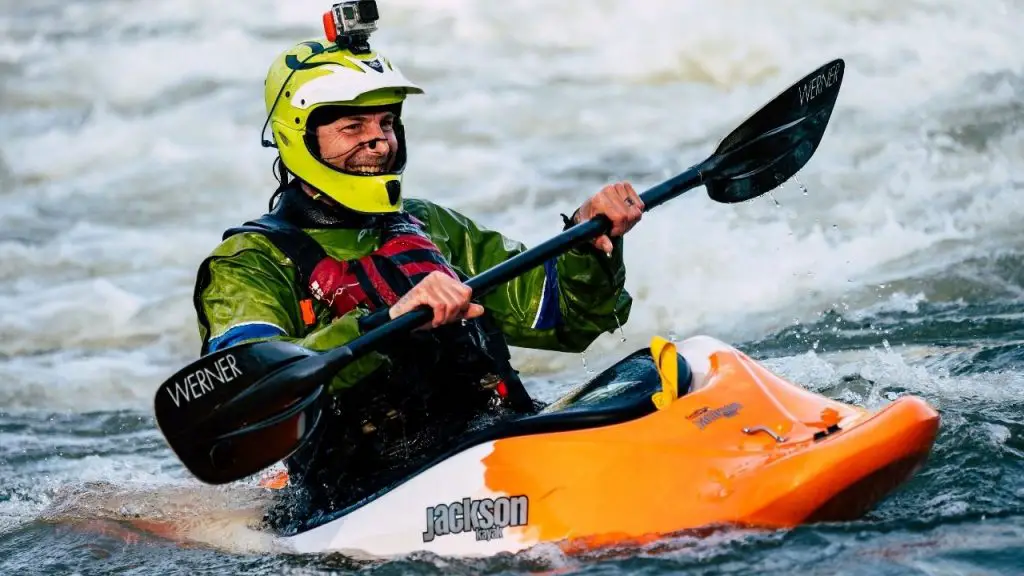
What is Lake Kayaking?
Before understanding lake kayaking, you have to know what a lake is. A lake is a water body surrounded by land. In this universe, you will find millions of lakes.
So, what is lake kayaking? Kayaking on a lake or water body that is surrounded by land is called lake kayaking.
Lake kayaking is very popular among paddlers because of its safe, easy, and recreational activities. Similarly, lake kayaking is ideal for paddling with friends and family. You can easily move forward on calm water and enjoy the day.
However, if you are an extreme paddler and want something challenging, lake kayaking won’t satisfy you. You can go for ocean or river kayaking.
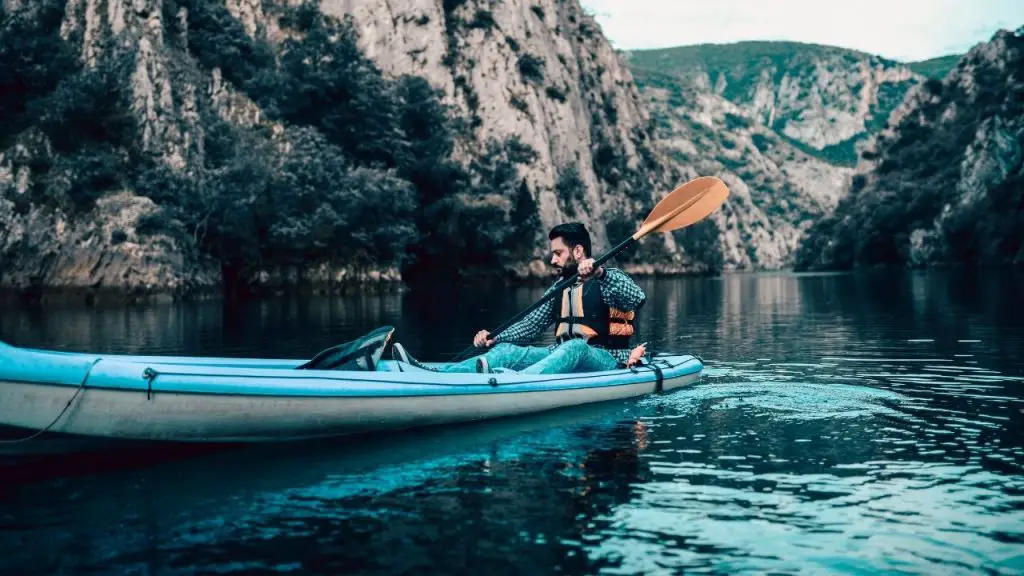
Why Whitewater Kayaks Are Not Suited for Lakes
Whitewater kayaks are not suitable for lakes. Why is it not suitable?
First, the purpose of the use is different. A whitewater kayak is ideal for turbulent rivers or oceans.
Second, the design of the whitewater kayaks is completely different from a recreational kayak. You will find a noticeable distinction in the hulls, seat, and body dimensions.
Third, whitewater kayaks are difficult to paddle on a lake. It is hard to move forward on calm water.
Fourth, you can not move at the same speed as other people who use a recreational kayak on the lake. It will make you disappointed.
Differences Between Whitewater Kayaking and Lake Kayaking
You already know the purposes of whitewater kayaks and whether it is suitable for lake or not. Now, it will be much better when you get a clear idea of the differences between whitewater kayaking and lake kayaking.
Purpose of whitewater kayaking and lakewater kayaking is different, so these kayaks come with distinct designs. Lake or recreational kayaks have an easy-moving paddle and flat surface for flat water.
On the contrary, whitewater kayaks have a heavy design with planing hulls.
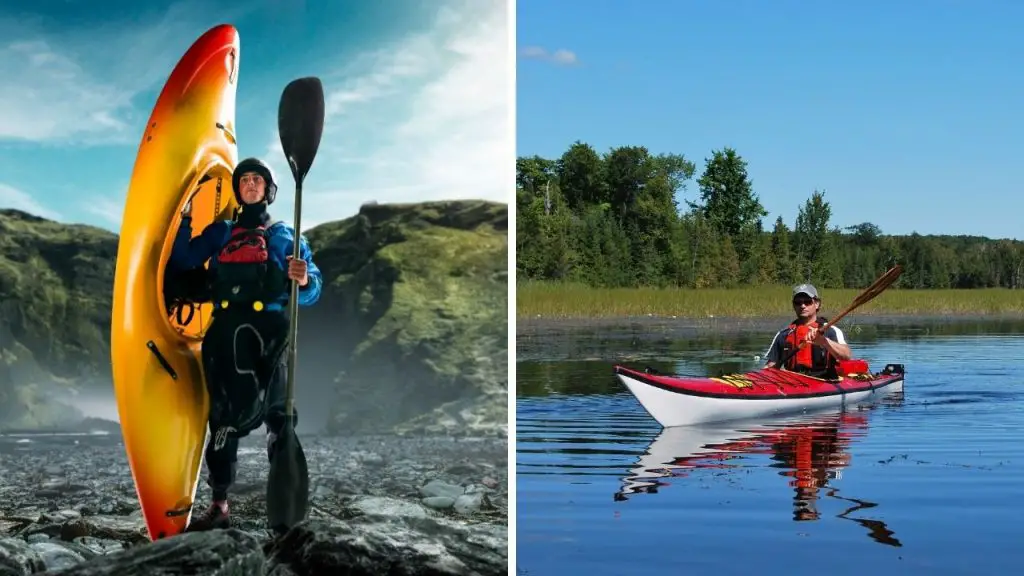
Paddlers who want more extreme water and challenging kayaking do whitewater kayaking on oceans or turbulent rivers.
Maneuverability is the design aesthetic of a kayak that indicates how quickly the kayak can turn and move forward. A whitewater kayak can move faster on high currents and turn easily. It is not possible on lakes or flat water.
Finally, lake kayaking is less risky than whitewater kayaking. You can go back to the kayak conveniently when it flips.
Pros and Cons of Using a Whitewater Kayak on a Lake
There are some advantages and disadvantages of using a whitewater kayak on a lake. The design of whitewater kayaks is not suitable for lakes. You will get more disadvantages while using it on lakes.
Pros
- Whitewater kayaks are more stable and float even in extreme conditions.
- You can use the hull to put a footprint on the water.
- Long-lasting and required less maintenance.
Cons
- The design is not ideal for lakes or flat water.
- You can not paddle faster on the lake.
- It makes you tired earlier, and you have reduced the paddling time.
- The price is higher than a recreational kayak.
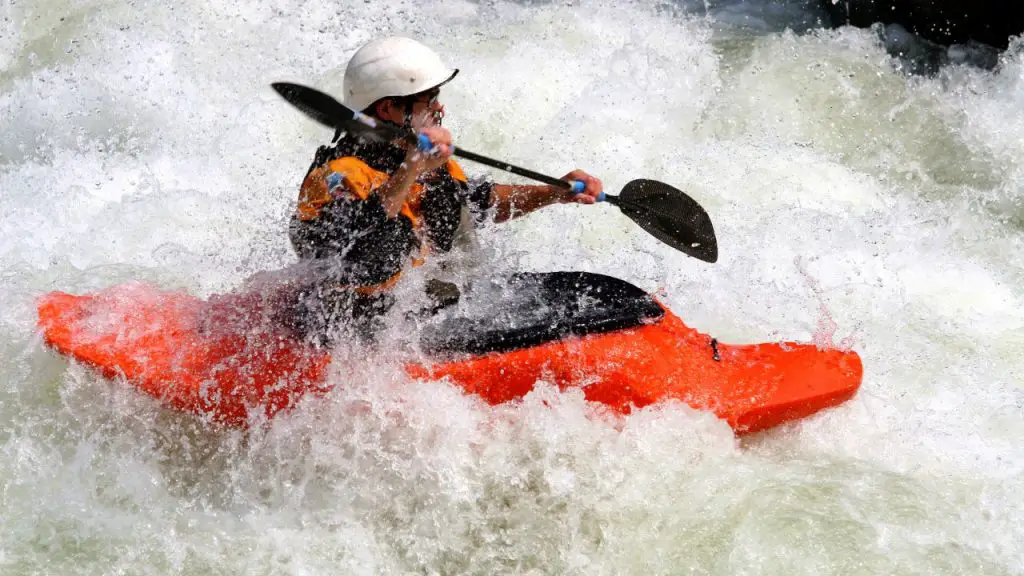
Best Kayaks for Lake Kayaking
Lake kayaking is the best option for beginners and paddlers who want recreational kayaks. You can enjoy kayaking safely with friends and family.
You will have several options for recreational kayaks. These are the most popular and more suitable for new paddlers.
Explorer K2 Kayak, 2-Person Inflatable Kayak Set with Aluminum Oars
FAQs
Can you use a recreational kayak in whitewater?
It is not recommended. Recreational kayaks are designed for calm water like a lake. Kayaking on whitewater with a recreational kayak will be risky.
Can you use a whitewater kayak in the ocean?
Yes. You can use a whitewater kayak on the ocean. Whitewater kayaks are designed for water bodies with high currents, extreme waves, and turbulent rivers or seas.
Can an ocean kayak be used on a lake?
You can not use an ocean kayak on a lake. The design is not suitable for kayaking on flat or calm water. It will be laborious.
What is the difference between a whitewater kayak and a regular kayak?
The main difference is the design and purpose. Whitewater kayaks are designed for turbulent rivers and oceans. On the contrary, regular kayaks are suitable for flat or calm water.
Can you use a fishing kayak for recreation?
Yes, you can use a fishing kayak for recreation. Make sure that you have removed the fishing gear before paddling it for recreational purposes.
What is the safest type of kayak?
Sit-on-tops are the safest kayaks for recreational purposes. You can use it on lakes, offshore, and on calm rivers.
Summing It Up
In conclusion, it can be said that you can use a whitewater kayak on a lake. But, it won’t satisfy you. It requires much effort to paddle.
Besides, a whitewater kayak can not move faster on flat water or a lake. You can not enjoy paddling with family and friends on calm water.
Safety is an important issue while paddling on the lake. Recreational kayaks are safer than whitewater kayaks.
Considering all these issues, we recommend not using a whitewater kayak on the lake. Select the best kayak that suits most of the characteristics of the water body. Let’s enjoy.


